今天雅思无忧小编整理了2023年1月11日雅思阅读考试真题答案 2023年剑桥雅思阅读真题解析:Thomas Young 剑桥雅思10test1阅读解析相关信息,希望在这方面能够更好帮助到大家。
本文目录一览:
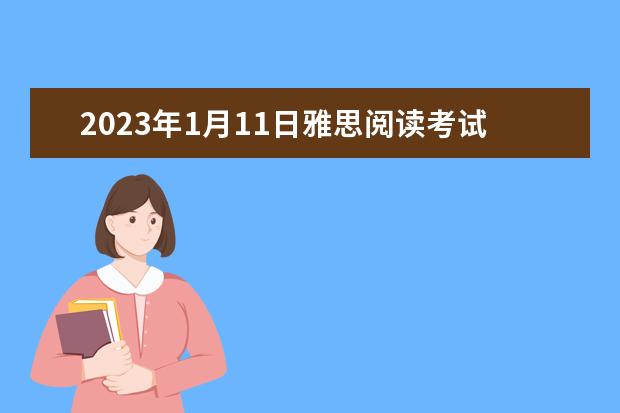
2023年1月11日雅思阅读考试真题答案
您好,我是专注留学考试规划和留学咨询的小钟老师。在追寻留学梦想的路上,选择合适的学校和专业,准备相关考试,都可能让人感到迷茫和困扰。作为一名有经验的留学顾问,我在此为您提供全方位的专业咨询和指导。欢迎随时提问!
一月上旬的雅思考试已经顺利落幕,大家对考试的结果想必是非常的关心的吧,不妨先来和小钟老师看一看2023年1月11日雅思阅读考试真题答案。
Passage 1
俄罗斯芭蕾舞发展史 (旧题)重复2023.11.2
题型:判断+填空
1. T --- 18世纪中期芭蕾流行
2. NG --- 音乐教师数量上升 (和机经不一样,机经是F)
3. NG --- 19世纪芭蕾在俄罗斯才流行
4. T --- 18世纪中期跳芭蕾和宗教意见冲突
5. T --- 对芭蕾舞的热情是否局限于皇室
6. F --- 一个人进入某个阻止是否被拒绝
7. 第一个theater建立者Alex
8. 他是个director
9. win worldwide popularity
10. dance and dress code
11. 法律相关舞蹈
12. 普希金创作获得成功 successful publication
13. 摆脱 myth
Passage 2
地球夜间灯光与经济(旧题)
题型:缺回忆
Passage 3
澳洲国家美术馆 (旧题)重复2023.12.9
题型:单选+判断+半句配对
Global Warming in New Zealand
For many environmentalists, the world seems to be getting warmer. As the nearest country of South Polar Region, New Zealand has maintained an upward trend in its average temperature in the past few years. However, the temperature in New Zealand will go up 40C in the next century while the polar region will go up more than 60C. The different pictures of temperature stem from its surrounding ocean which acts like the air conditioner. Thus New Zealand is comparatively fortunate.
Scientifically speaking, this temperature phenomenon in New Zealand originated from what researchers call "SAM" {Southern Annular Mode), which refers to the wind belt that circles the Southern Oceans including New Zealand and Antarctica. Yet recent work has revealed that changes in SAM in New Zealand have resulted in a weakening of moisture during the summer, and more rainfall in other seasons. A bigger problem may turn out to be heavier droughts for agricultural activities because of more water loss from soil, resulting in poorer harvest before winter when the rainfall arrive too late to rescue.
Among all the calamities posed by drought, moisture deficit ranks the first. Moisture deficit is the gap between the water plants need during the growing season and the water the earth can offer. Measures of moisture deficit were at their highest since the 1970s in New Zealand. Meanwhile, ecological *yses clearly show moisture deficit is imposed at different growth stage of crops. If moisture deficit occurs around a crucial growth stage, it will cause about 22% reduction in grain yield as opposed to moisture deficit at vegetative phase.
Global warming is not only affecting agriculture production. When scientists say the country's snow pack and glaciers are melting at an alarming rate due to global warming, the climate is putting another strain on the local places. For example, when the development of global warming is accompanied by the falling snow line, the local skiing industry comes into a crisis. The snow line may move up as the temperature goes up, and then the snow at the bottom will melt earlier. Fortunately, it is going to be favourable for the local skiing industry to tide over tough periods since the quantities of snowfall in some areas are more likely to increase.
What is the reaction of glacier region? The climate change can be reflected in the glacier region in southern New Zealand or land covered by ice and snow. The reaction of a glacier to a climatic change involves a complex chain of processes. Over time periods of years to several decades, cumulative changes in mass balance cause volume and thickness changes, which will affect the flow of ice via altered internal deformation and basal sliding. This dynamic reaction finally leads to glacier length changes, the advance or retreat of glacier tongues. Undoubtedly, glacier mass balance is a more direct signal of annual atmospheric conditions.
The latest research result of National Institute of Water and Atmospheric (NIWA) Research shows that glaciers line keeps moving up because of the impacts of global warming. Further losses of ice can be reflected in Mt. Cook Region. By 1996, a 14 km long sector of the glacier had melted down forming a melt lake (Hooker Lake) with a volume. Melting of the glacier front at a rate of 40 m/yr will cause the glacier to retreat at a rather uniform rate. Therefore, the lake will continue to grow until it reaches the glacier bed.
A direct result of the melting glaciers is the change of high tides that serves the main factor for sea level rise. The trend of sea level rise will bring a threat to the groundwater system for its hyper-saline groundwater and then pose a possibility to decrease the agricultural production. Many experts believe that the best way to counter this trend is to give a longer-term view of sea level change in New Zealand. Indeed, the coastal boundaries need to be upgraded and redefined.
There is no doubt that global warming has affected New Zealand in many aspects. The emphasis on the global warming should be based on the joints efforts of local people and experts who conquer the tough period. For instance, farmers are taking a long term, multi-generational approach to adjust the breeds and species according to the temperature, Agriculturists also find ways to tackle the problems that may bring to the soil. In broad terms, going forward, the systemic resilience that's been going on a long time in the ecosystem will continue.
How about animals' reaction? Experts have surprisingly realised that animals have unconventional adaptation to global warming. A study has looked at sea turtles on a few northern beaches in New Zealand and it is very interesting to find that sea turtles can become male of female according to the temperature. Further researches will try to find out how rising temperatures would affect the ratio of sex reversal in their growth. Clearly, the temperature of the nest plays a vital role in the sexes of the baby turtles,
Tackling the problems of global warming is never easy in New Zealand, because records show the slow process of global warming may have a different impact on various regions. For New Zealand, the emission of carbon dioxide only accounts for 0.5% of the world's total, which has met the governmental standard. However, (New Zealand's effort counts only a tip of the iceberg. So far, global warming has been a world issue that still hangs in an ambiguous future.
27-30 Multiple Choices
27.What does the author illustrate in the first paragraph?
describing the role of art museums in Australian culture
28. Contrast the old and new museums, the author criticized new ngv in what aspect?
architecture dosing elements more than art
29. What does the writer notice about the new museum?
the order of room are connected by salon
30. What should be done to keep NGV successful?
ebullience passion
31-35 Y/N/NG
31. N --- Grounds' design failed to recognize the importance of founders and performances In museums.
32. N --- Bellini’s New NGv neglect International museum design trends
33. NG --- Bellini's work on subsequent museum projects has been less successful than thaton NGV.
34. Y --- The gallery visitors go to temporary /exhibitions to the south, the first sequence of spaces for the permanent collection.
35. NG --- Too much change may have negative the impact on it.
36-40 Matching sentence endings
A The museum program will lose its individuality
B The museum will lose credibility
C Will lose the museum' s independence
D Will suffer its reputation
E increase attendance in the future
F People will be more willing to come here
G more capability for increasing revenue
H try to balance opposing and various demands
I it is financial necessary
36. F --- If a larger space in museum is available
37. E --- If children are allowed to move freely in parts of the galleries
38. A --- If too much emphasis is placed on the building industry
39. D --- If there is over revenue on blockbusters overused
40. H --- If museum want to continue to be successful
希望以上的答复能对您的留学申请有所帮助。如果您有任何更详细的问题或需要进一步的协助,我强烈推荐您访问我们的留学官方网站
,在那里您可以找到更多专业的留学考试规划和留学资料以及*的咨询服务。祝您留学申请顺利!
2023年剑桥雅思阅读真题解析:Thomas Young
您好,我是专注留学考试规划和留学咨询的小钟老师。在追寻留学梦想的路上,选择合适的学校和专业,准备相关考试,都可能让人感到迷茫和困扰。作为一名有经验的留学顾问,我在此为您提供全方位的专业咨询和指导。欢迎随时提问!
对于雅思考生来说,剑桥雅思阅读题难不难?下面就和小钟老师一起来看看2023年剑桥雅思阅读真题解析:Thomas Young。
Thomas Young
The Last True Know-It-All
A Thomas Young (1773-1829) contributed 63 articles to the Encyclopedia Britannica, including 46 biographical entries (mostly on scientists and classicists) and substantial essays on "Bridge,” "Chromatics," "Egypt," "Languages" and "Tides". Was someone who could write authoritatively about so many subjects a polymath, a genius or a dilettante? In an ambitious new biography, Andrew Robinson argues that Young is a good contender for the epitaph "the last man who knew everything." Young has competition, however: The phrase, which Robinson takes for his title, also serves as the subtitle of two other recent biographies: Leonard Warren's 1998 life of paleontologist Joseph Leidy (1823-1891) and Paula Findlen's 2023 book on Athanasius Kircher (1602-1680), another polymath.
B Young, of course, did more than write encyclopedia entries. He presented his first paper to the Royal Society of London at the age of 20 and was elected a Fellow a week after his 21st birthday. In the paper, Young explained the process of accommodation in the human eye on how the eye focuses properly on objects at varying distances. Young hypothesized that this was achieved by changes in the shape of the lens. Young also theorized that light traveled in waves and he believed that, to account for the ability to see in color, there must be three receptors in the eye corresponding to the three "principal colors" to which the retina could respond: red, green, violet. All these hypothesis were subsequently proved to be correct.
C Later in his life, when he was in his forties, Young was instrumental in cracking the code that unlocked the unknown script on the Rosetta Stone, a tablet that was "found" in Egypt by the Napoleonic army in 1799. The stone contains text in three alphabets: Greek, something unrecognizable and Egyptian hieroglyphs. The unrecognizable script is now known as demotic and, as Young deduced, is related directly to hieroglyphic. His initial work on this appeared in his Britannica entry on Egypt. In another entry, he coined the term Indo-European to describe the family of languages spoken throughout most of Europe and northern India. These are the landmark achievements of a man who was a child prodigy and who, unlike many remarkable children, did not disappear into oblivion as an *.
D Born in 1773 in Somerset in England, Young lived from an early age with his maternal grandfather, eventually leaving to attend boarding school. He haddevoured books from the age of two, and through his own initiative he excelled at Latin, Greek, mathematics and natural philosophy. After leaving school, he was greatly encouraged by his mother's uncle, Richard Brockle*y, a physician and Fellow of the Royal Society. Following Brockle*y's lead, Young decided to pursue a career in medicine. He studied in London, following the medical circuit, and then moved on to more formal education in Edinburgh, Gottingen and Cambridge. After completing his medical training at the University of Cambridge in 1808, Young set up practice as a physician in London. He soon became a Fellow of the Royal College of Physicians and a few years later was appointed physician at St. George's Hospital.
E Young's skill as a physician, however, did not equal his skill as a scholar of natural philosophy or linguistics. Earlier, in 1801, he had been appointed to a professorship of natural philosophy at the Royal Institution, where he delivered as many as 60 lectures in a year. These were published in two volumes in 1807. In 1804 Young had become secretary to the Royal Society, a post he would hold until his death. His opinions were sought on civic and national matters, such as the introduction of gas lighting to London and methods of ship construction. From 1819 he was superintendent of the Nautical Almanac and secretary to the Board of Longitude. From 1824 to 1829 he was physician to and inspector of calculations for the Palladian Insurance Company. Between 1816 and 1825 he contributed his many and various entries to the Encyclopedia Britannica, and throughout his career he authored numerous books, essays and papers.
F Young is a perfect subject for a biography - perfect, but daunting. Few men contributed so much to so many technical fields. Robinson's aim is to introduce non-scientists to Young's work and life. He succeeds, providing clear expositions of the technical material (especially that on optics and Egyptian hieroglyphs). Some readers of this book will, like Robinson, find Young's accomplishments impressive; others will see him as some historians have - as a dilettante. Yet despite the rich material presented in this book, readers will not end up knowing Young personally. We catch glimpses of a playful Young, doodling Greek and Latin phrases in his notes on medical lectures and translating the verses that a young lady had written on the walls of a summerhouse into Greek elegiacs. Young was introduced into elite society, attended the theatre and learned to dance and play the flute. In addition, he was an accomplished horseman. However, his personal life looks pale next to his vibrant career and studies.
G Young married Eliza Maxwell in 1804, and according to Robinson, "their marriage was a happy one and she appreciated his work." Almost all we know about her is that she sustained her hu*and through some rancorous disputes about optics and that she worried about money when his medical career was slow to take off. Very little evidence survives about the complexities of Young's relationships with his mother and father. Robinson does not credit them, or anyone else, with shaping Young's extraordinary mind. Despite the lack of details concerning Young's relationships, however, anyone interested in what it means to be a genius should read this book.
Questions 1-7
Do the following statements agree with the information given in Reading Passage 1?
In boxes 1-6 on your answer sheet, write
TRUE if the statement is true
FALSE if the statement is false
NOT GIVEN if the information is not given in the passage
1 “The last man who knew everything” has also been claimed to other people.
2 All Young’s articles were published in Encyclopedia Britannica.
3 Like others, Young wasn't so brilliant when grew up.
4 Young's talents as a doctor are surpassing his other skills.
5 Young's advice was sought by people responsible for local and national issues.
6 Young was interested in various social pastimes.
7 Young suffered from a disease in his later years.
Questions 8-13
Answer the questions below.
Choose NO MORE THAN THREE WORDS AND/OR A NUMBER from the passage for each answer.
8 How many life stories did Young write for Encyclopedia Britannica?
9 What aspect of scientific research did Young do in his first academic paper?
10 What name did Young introduce to refer to a group of languages?
11 Who inspired Young to start the medical studies?
12 Where did Young get a teaching position?
13 What contribution did Young make to London?
文章题目:
Thomas Young—The Last True Know-it All
托马斯·杨——最后一个无所不知的人
篇章结构
体裁人物传记
题目托马斯·杨——最后一个无所不知的人
结构A段:托马斯·杨对百科全书的主要成就
B段:托马斯年轻时的主要成就
C段:托马斯晚年的主要成就
D段:托马斯童年的生活背景及成长经历
E段:托马斯作为自然哲学学者取得的成就
F段: 托马斯在其他领域的成就
G段:托马斯的感情生活
试题分析
Question 1-7
题目类型:True / false /not given
题号定位词文中对应点题目解析
1Other peopleA段第四句“Young has competition, however: The phrase, which Robinson takes for his title, also serves as the subtitle of two other recent biographies: Leonard Warren's 1998 life of paleontologist Joseph Leidy (1823-1891) and Paula Findlen's 2023 book on Athanasius Kircher (1602-1680), another polymath.”该句中明确给出了Young还有其他的竞争者,他们的传记中也同样拥有这样的小标题,分别是Leonard Warren写的关于Joseph Leidy的传记,以及 Paula Findlen's写的关于Athanasius Kircher的传记。
因此,本题答案为True
2all, articlesB段第一、二句B段第一句 “Young, of course, did more than write encyclopedia entries.”明确表示Young所做的远不仅仅是编辑大英百科全书的词条,因此并不是所有的都在百科全书。而在本段第二句中,作者指出,Young在20岁的时候将自己的第一篇论文自荐给伦敦皇家学会,并在一年后成为该学会的会员: He presented his first paper to the Royal Society of London at the age of 20 and was elected a Fellow a week after his 21st birthday。Paper与article为近意思。显然,题干与原文含义相反。
因此,本题答案为False
3likeC段最后一句C段整体是在介绍Young晚年的主要成就,即Young长大后的成就。此外,在C段最后一句中,作者明确指出Young和其他的孩子不同的一点在于,Young并没有像其他那些年少成名而后来江郎才尽的孩子一样,他后来同样取得了非凡的成就: These are the landmark achievements of a man who was a child prodigy and who, unlike many remarkable children, did not disappear into oblivion as an *.句中的unlike为like的反义词,显然题干与原文含义相反。
因此,本题答案为False
4surpassingD段第四、七句D段介绍了Young的成长背景和经历,同时体现出其涉猎范围较为广泛。其中第四句中提到Young决定学医,并且在后面的介绍中指出Young还参加戏剧演出,学习跳舞和吹笛子: He then broke with his Quaker upbringing by attending the theater and learning to dance and play the flute. In addition, he was an accomplished horseman.而在第七句中作者指出Young还是一名杰出的马术师。但是并未指出Young在哪个方面的造诣更高,更有天赋。Surpassing这个概念并没有在文中体现。
因此,本题答案为Not Given
5soughtE段第四句“ His opinions were sought on civic and national matters”,文中表明Young的很多观点关注人民和国家事务。题干与原文含义相同。
因此,本题答案为True
6Interested in, social pastimeF段第七句“We catch glimpses of a playful Young, doodling Greek and Latin phrases in his notes on medical lectures and translating the verses that a young lady had written on the walls of a summerhouse into Greek elegiacs.”文中指出,通过Young的医学演讲中乱写的希腊字母和拉丁短语以及将一位年轻女性写在凉亭上的诗歌翻译成希腊挽歌便能看出他的幽默。显然,Young对于这样的社交娱乐是感兴趣的。题干和原文相符合。
因此,本题答案为True
7disease, later yearsC段第一句,G段第一句C段第一句给出了“later in his life,”但是本段近讲述了Young晚年在学术方面的成就;G段给出了Young的婚后生活,以及Robinson在书中并未提及Young与父母间的关系。但无论哪一个点都没有提及其晚年饱受某种疾病之苦。
因此,本题答案为Not Given
题目类型:Short-answer question
8life storiesA段第一句“Thomas Young (1773-1829) contributed 63 articles to the Encyclopedia Britannica, including 46 biographical entries (mostly on scientists and classicists)…”该剧中的“biographical entries”指传记词条,与题干中的life stories表示相同涵义。
因此,本题答案为46
9first academic paperB段第三句“In the paper, on how the eye focuses properly on objects at varying distances, Young hypothesized that deformation of the crystalline lens accomplished the accommodation.”B段段首表明,Young将自己的第一篇论文自荐给了伦敦皇家学会学会。因此本段讨论的是其第一篇论文。而本段第三句指出,在这篇论文中,Young主要讨论了人类眼球的调节机制
因此,本题答案为humaneye或human eye accommodation
10a group of languagesC段第五句“In another entry, he coined the term Indo-European to describe the family of languages spoken throughout most of Europe and northern India.”该句指出,Young创造了术语 Indo-European来描述在欧洲大部分地区以及北印度使用的语言。
因此,本题答案为Indo-European
11inspire, medical studiesD段第四句D段前面介绍了Young童年时期的生活背景。本段第四句中则指出:“Following Brockle*y's lead, Young decided to pursue a career in medicine.”。显然,正是因为 Richard Brockle*y的引导,Young才决定在医学方面有所建树。
因此,本题答案为 Richard Brockle*y
12teaching positionE段第二句“ Earlier, in 1801, he had been appointed to a professorship of natural philosophy at the Royal Institution”,题干中的teaching position与E段第二句中的professorship均表示“教师职位”,该句明确指出,Young作为自然哲学的教授,受聘于英国科学研究所。
因此,本题答案为 Royal Institution
13LondonE段第五句“His opinions were sought on civic and national matters, such as the introduction of gas lighting to London and methods of ship construction.”E段主要介绍了Young作为自然哲学学者取得的成就。而第五句则列举了Young的两个成就,其对于伦敦的所做出的成就在于煤气照明的引入。
因此,本题答案为gas lighting
A我们该怎样理解托马斯·杨(1773-1829)?他是《大不列颠百科全书》中63篇文章的作者,其中包括46篇传记(大部分都是关于科学家和古典学者),和大量关于“桥” “色彩论” “埃及” “语吉” “潮汐”等的论文。一个能够写出这样多有权威性文章的人应该算是一个博学者? 一个天才?还是一个业余兴趣广泛的人呢?在一篇关于他的比较激进的传记中,Andrew Robinson 认为托马斯杨是-位强有力的竞争者能够配得这样的墓志铭“是最后一个知道任何事的人”。但是杨也要面对竞争:因为这样的传记标题Robinson不仅给了他,也作为副标题给了有关另两位学者的传记:Lenard Warren 1998年著的《古生物学家Joseph Leipy的一生》(1823-1891)以及Paula Findlen 2023年著的关于另一位博学者Athanasius Kircher(1602-1680)的传记。
B当然杨的贡献远不止写了很多百科全书上的文章,他在20岁的时候将自己的第一篇论文自荐给伦敦皇家学会,并在他的21岁生日后被评为一周科学人物,杨在该篇论文中解释了人类眼睛的调节机制一一关于眼睛如何通过不同的距离聚焦在物体上。在后面的文章中,他更加全面地探讨了这个问题,类似牛顿,他在自己身上进行了可怕的实验用以获得相关的证据,他还得出这样的理论:光是通过“以太”分子的振动,以波的形式进行传递的,而“以太”是一种假想物质,其存在还存在争议性。他还认为为了能看见颜色,必须要有3个感应器对“三原色”进行感应,而这三种视网膜对其产生感应的颜色就是红,黄,蓝二种颜色。
C在他人生的晚些时候,也就是40多岁的时候,杨试图破解锁在罗塞塔石碑里的未知文字密码,这个石碑是在1799年在埃及被拿破仑的军队发现的,并且从1802年起就在英国博物馆进行展出。该石碑上包含了 3种不同的字母:希腊语,不可辨识的文字以及埃及的象形文字。这种不可辨识的文字现在被认为是正如杨所推断的是很普通的,是和象形文字直接相关的。他最初有关这方面的工作首次出现在他在《大不列颠百科全书》中编纂的词条。在另一个条目中,他创造了术语“Indo-European”来描述在欧洲大部分地区以及北印度使用的语言。这些都是这是这位从小就展露科学天赋并且不像很多孩子后来江郎才尽的科学家获得的里程碑式的成就。
D托马斯·杨出生在英国萨默塞特郡一个虔诚的教友会教徒家庭,从小和他的外公一起长大,最后去了寄宿学校。他两岁的时候就博览群书,并且自学熟练掌握了拉丁语,希腊语,数学以及哲学,在很大程度上他受到了舅舅Richard Brockle*y的鼓励,他的舅舅也是英国皇家学会的一位内科医生。在Brockle*y的引导下,杨决定要在医学方而有所建树,他曾先后在伦敦大学、爱丁堡大学和格丁根大学学习医学,多亏了Brockle*y的引荐,杨进入了英国皇家学会,他最后也打破了从小在教友会的教育,他参加戏剧演出,学习跳舞和吹笛子,此外,他还是一位杰出的马术师。在1808年结束在剑桥大学的医学学习后,杨在伦敦开了一家诊所,很快他就成为皇家内科医生学会的一员,并且几年后成为圣乔治医院的一名内科医生。
E杨作为内科医生的医术却赶不上他作为自然哲学学者或是语言学家取得的成就,早在1801年,他已经被任命为英国皇家学会的教授,他每年要在那里举办60场的讲座。这些讲座在1807年以两本书的形式进行出版。1804年杨就已经成为英国朵家学会的秘书,而他获此殊荣直至去世。他的很多观点关注人民和国家事务,比如说在伦敦引进煤气照明和造船方法。从1819年起,他就是航海天文年历的主要负责人,也是Board of Longitude的秘书。从1824年到1829年,他担任Palladian 保险公司的精算师和内科医生。在1816年和1825年间,他为《大不列颠百科全书》编纂了许多词条,而且穷其一生著作,论文无数。
F我们通过杨在医学课上胡乱写的希腊字母和拉丁文短语以及他将一位年轻的女士写在避暑山庄墙上的诗句翻译成挽歌可以看出他的幽默,但是他的个人生活也因为自己对工作和研究的全情投入而略显苍白。
G他在1804年和Eliza Maxwell结婚,据Robinson所述“他们的婚姻是幸福的,因为他的夫人欣赏他的工作”。我们对于他夫人的了解仅限于她在她丈夫备受一些关于眼睛的理论方面争议的时候总是坚定地支持他,并且当他的医学生涯开始慢慢起飞的时候,她开始有些担心钱的问题。值得一提的是,杨没有被保护的人,他都是和自己的导师进行互动一一先是他的外公,后是Brockle*y一一还有先于他过失的一些伟人(其中很多是很著名的如牛顿,杨最早在17岁读了他写的书)。但是关于杨和他母亲以及父亲的关系的记述却鲜力人知,Robinson在说到杨的非凡的头脑时也并没有将其归功于他的父母,或许很难有这样的巧合:过去的天才都是由于卓越的父母教育造就的。
希望以上的答复能对您的留学申请有所帮助。如果您有任何更详细的问题或需要进一步的协助,我强烈推荐您访问我们的留学官方网站
,在那里您可以找到更多专业的留学考试规划和留学资料以及*的咨询服务。祝您留学申请顺利!
剑桥雅思10test1阅读解析
您好,我是专注留学考试规划和留学咨询的小钟老师。在追寻留学梦想的路上,选择合适的学校和专业,准备相关考试,都可能让人感到迷茫和困扰。作为一名有经验的留学顾问,我在此为您提供全方位的专业咨询和指导。欢迎随时提问!
剑桥雅思是很多同学会选择的一本资料,同学们做得怎么样呢?下面就和小钟老师一起来了解一下剑桥雅思10test1阅读解析。
一、题型
以文章为单位分析:
Passage one 中包含了判断题,简单题和表格填空题;Passage two 中包含了List of Headings和判断题;Passage three中包含四选一的选择题,半句式的matching题和判断题。
其实从以上分析中就会明显发现,判断题的考察比重是非常之大的,在三篇文章中均有涉及,共有十五道题,占总题数种的37.5%。
除此之外,LoH共8题,占20%;
表格填空5题,占15%;
Maching5题, 占15%;
选择题4题,占10%;
简答题3题,占3%。
其中LOH在passage two中作为第一个题,以8个小题的数量让它显得非常与众不同。要知道在剑桥真题3-9中要找到能在同类题型中题目个数上与此媲美的少之又少。值得引起我们重视,尤其在我们都以为LOH考察力度不会过于集中的今天。
二、题型内在变化
Test 1 中的题型特征和往年真题相比并没有太大的变化。其中需要注意的是判断题中NOT GIVEN的个数明显增多,三篇文章共15个判断题,其中每篇文章分别出现2个共6个NOT GIVEN,占总题数的40%。这个比例无论是从什么角度来看都是非常之高的。因此这对于复习阶段的同学们具有非常明确的指导意义--务必要花大力气复习理解NOT GIVEN的若干种情况,并能够轻易区分其与TRUE/YES或者和FALSE/NO的区别。
特别注意:在本套题判断题中,共出现了
1. The few existing stepwells in Delhi are more attractive than those found elsewhere.
2. It is easier for *aller companies to be innovative.
3. A manager’s approval of an idea is more persuasive than that of a colleague.
三处横向比较的句子,其中两句话符合我们的规律总结为NOT GIVEN,另外一句话为NO。因此,能够正确快速判断出横向比较依然不失为经济省时的判断方法。
三、难度
总体而言,剑十TEST 1的难度并不是特别大,难度是低于今年(2023)大部分时候考试的难度的,具体来说:
Passage one 中2题难度相对较大,其余题难度均为简单和中等难度的题型,定位词明显,好定位,也好判断。
Passage two就由两个题型组成。其中LOH有一道题难度有些大,其余题均可在规则的段落主题句分布的首句、第二句、最后一句三句话中找到答案。这篇文章的判断题非常简单,因为LOH是全文型的,所以其实在做LOH时就已经对于大部分文章内容有了比较清晰的把握了。
Passage three 选择题简单,matching题有些许难题,判断题较难。
因此,综上所述,此套阅读题对于基础扎实的同学,作对28道题,拿7分以上的分数问题应该不是特别大。
希望以上的答复能对您的留学申请有所帮助。如果您有任何更详细的问题或需要进一步的协助,我强烈推荐您访问我们的留学官方网站
,在那里您可以找到更多专业的留学考试规划和留学资料以及*的咨询服务。祝您留学申请顺利!
以上,就是雅思无忧小编给大家带来的2023年1月11日雅思阅读考试真题答案 2023年剑桥雅思阅读真题解析:Thomas Young 剑桥雅思10test1阅读解析全部内容,希望对大家有所帮助!
雅思培训
免责声明:文章内容来自网络,如有侵权请及时联系删除。


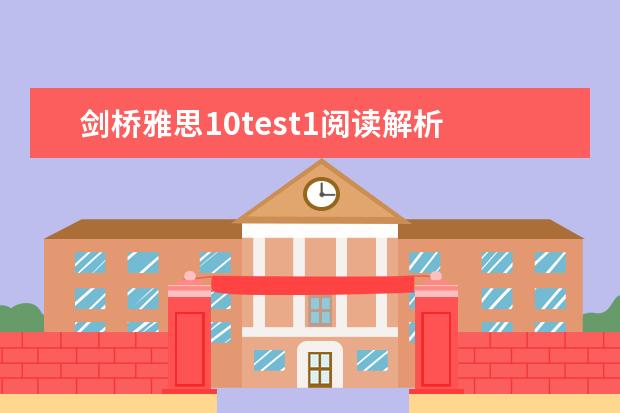 剑桥雅思10test1阅读解析 剑桥雅思阅读6 test3答案? 2023年剑桥雅思阅读真题解析:Thomas Young
剑桥雅思10test1阅读解析 剑桥雅思阅读6 test3答案? 2023年剑桥雅思阅读真题解析:Thomas Young
 2023年剑桥雅思阅读真题解析:Thomas Young 剑桥雅思10test1阅读解析 剑桥雅思4阅读:Adults and children are fre
2023年剑桥雅思阅读真题解析:Thomas Young 剑桥雅思10test1阅读解析 剑桥雅思4阅读:Adults and children are fre
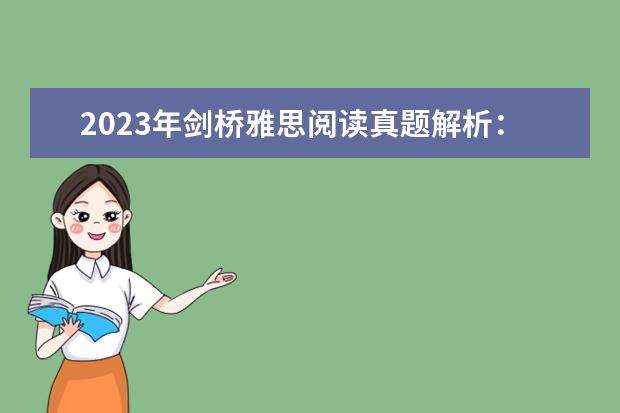 2023年剑桥雅思阅读真题解析:Thomas Young(剑桥雅思10test1阅读解析)
2023年剑桥雅思阅读真题解析:Thomas Young(剑桥雅思10test1阅读解析)
 剑桥雅思10test1阅读解析 剑桥雅思10 test3 阅读 答案 2023年剑桥雅思阅读真题解析:Thomas Young
剑桥雅思10test1阅读解析 剑桥雅思10 test3 阅读 答案 2023年剑桥雅思阅读真题解析:Thomas Young
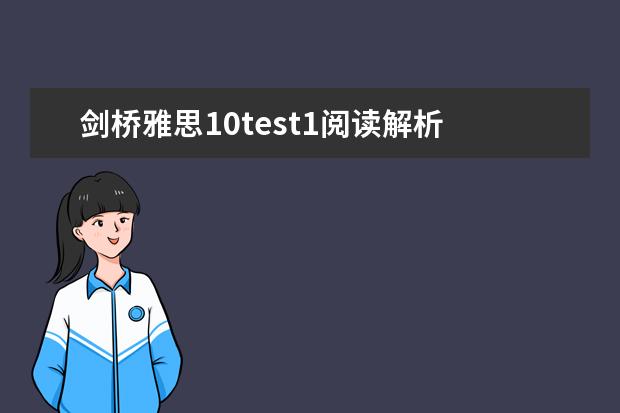 剑桥雅思10test1阅读解析 剑桥雅思9:阅读题型及要点剖析 2023年剑桥雅思阅读真题解析:Thomas Young
剑桥雅思10test1阅读解析 剑桥雅思9:阅读题型及要点剖析 2023年剑桥雅思阅读真题解析:Thomas Young
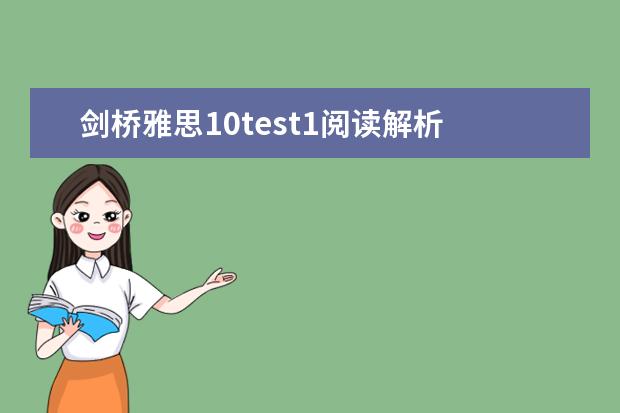 剑桥雅思10test1阅读解析 剑桥雅思阅读长难句分析109 请问2023年剑桥雅思阅读真题解析:Thomas Young
剑桥雅思10test1阅读解析 剑桥雅思阅读长难句分析109 请问2023年剑桥雅思阅读真题解析:Thomas Young
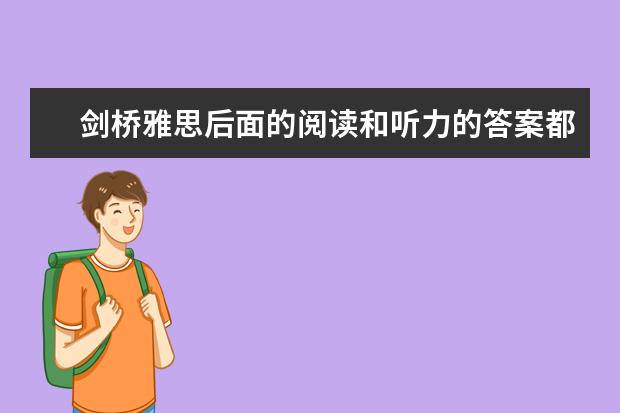 剑桥雅思后面的阅读和听力的答案都写着三个范围 2023年剑桥雅思阅读真题解析:Thomas Young 剑桥雅思10test1阅读解析
剑桥雅思后面的阅读和听力的答案都写着三个范围 2023年剑桥雅思阅读真题解析:Thomas Young 剑桥雅思10test1阅读解析
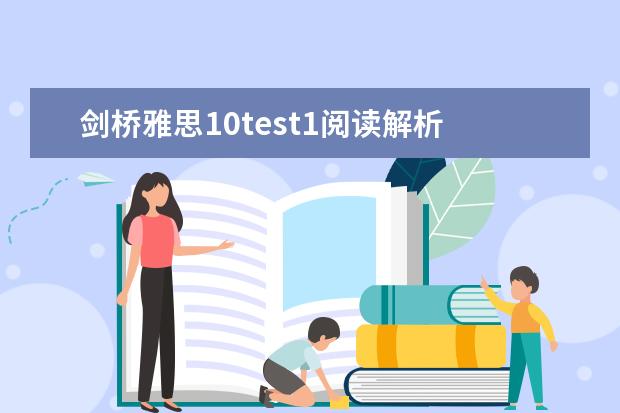 剑桥雅思10test1阅读解析 有没有剑桥雅思1和2的解析 请问2023年剑桥雅思阅读真题解析:Thomas Young
剑桥雅思10test1阅读解析 有没有剑桥雅思1和2的解析 请问2023年剑桥雅思阅读真题解析:Thomas Young
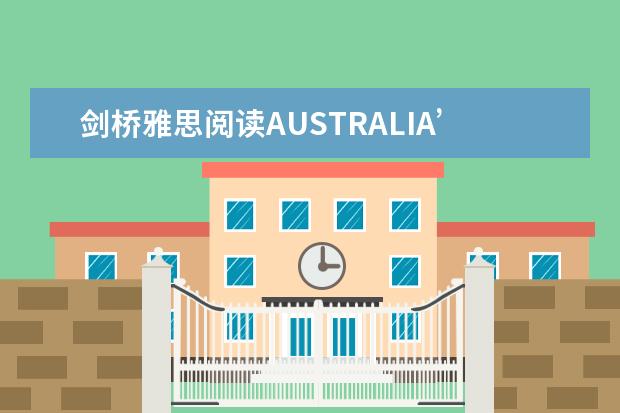 剑桥雅思阅读AUSTRALIA’SSPORTINGSUCCESS及答案解析 2023年剑桥雅思阅读真题解析:Thomas Young 剑桥雅思10test1阅读
剑桥雅思阅读AUSTRALIA’SSPORTINGSUCCESS及答案解析 2023年剑桥雅思阅读真题解析:Thomas Young 剑桥雅思10test1阅读
 2023年剑桥雅思阅读真题解析:Thomas Young 剑桥雅思10test1阅读解析 剑桥雅思5 test2中阅读24~27题的解析,请大家帮帮忙啊!!!谢
2023年剑桥雅思阅读真题解析:Thomas Young 剑桥雅思10test1阅读解析 剑桥雅思5 test2中阅读24~27题的解析,请大家帮帮忙啊!!!谢